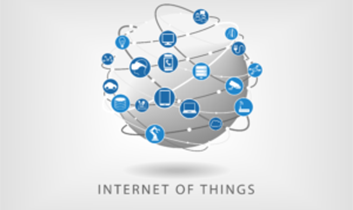The IoT and the transformations it brings are filled with potential—access to expanding markets, the innovation of new service models, improved efficiencies, and more. But, despite those promises, there’s one question that often halts potential IoT-adopters in their tracks:
Where do I begin?
In a recent blog, Cisco looked more closely at what organizations can do to prepare for and make the most of the IoT. We’ve summarized the findings into eight steps, so keep reading to find out what they are.
Step 1: Understand Your Vision
Your vision is your foundation. It’s the reason you are pursuing IoT initiatives, and it’s what drives you towards success. Why do you want to implement IoT initiatives and projects, and what will they help you achieve? Answering these questions early on will make it easier for individuals and teams to rally around a common goal.
Step 2: Determine Where to Start
When it comes to the IoT, one piece of advice you’re likely to hear time and again is to start small and scale up. Taking this approach will make it easier to achieve quick wins to motivate your teams and act as a springboard for bigger and better things.
Oftentimes, the fastest paths to success are found through improving existing processes and reducing costs:
- Connected operations may involve linking a greater diversity of devices to your network.
- Remote operations could involve streamlining ongoing monitoring activities and asset management.
- Predictive analytics help you identify where and how you can take effective action.
- Preventative maintenance can help make teams more productive.
Once you have tested the waters, you will be more able and confident to seek out other opportunities, revenue streams, and ways to disrupt the market.
Step 3: Assess the Skills You Need
The greatest IoT success stories happen when you have the right technology and the right people. Evaluate your needs to make sure members of your teams have not only the technical skills needed to carry out projects, but also soft skills that will enable them to nurture a culture of collaboration and trust.
Step 5: Determine Your Technological and Cultural Readiness
From a technological perspective, what you need here can, and should, reflect where you are starting. In other words, if your first projects are small you may not need to worry about overhauling your legacy infrastructure in its entirety right away. Perhaps think about connecting some existing systems first, and the progress towards introducing more flexible frameworks on a larger scale down the road.
Next, think about your organization’s readiness to support this evolution. How do teams work together now? How do they communicate? What shifts to your company’s culture will this process require, and what types of changes will be bring?
Step 6: Create a Connected Framework
Think of this as the blueprint for your IoT transformation. What technologies is your network currently supporting, and what advancements do you anticipate adding to it down the road?
Step 7: Integrate Security
Increased connectivity means a need for more robust, unified, and policy-based security baked into every stage and component of your workflow. Plan for how you will handle security incidents, figure out what industry best practices you can leverage, put in place checks and inspections, and apply the appropriate rules to the types of data you will be capturing.
Step 8: Calculate Success
At the end of the day, despite all the bells and whistles that come with them, you have very real business reasons for undertaking IoT initiatives. Whether you want to boost efficiencies within your organization or attract a new type of customer, use your metrics to understand what approaches have worked and how you can improve.
Remember, the IoT is a journey. Approaching it with a plan that reflects what you want to achieve and how you will get there is what will enable your organization to maximize its success.
Are you ready to take the plunge? Contact us today to learn how Activo can help you maximize your success in the IoT!
Read more from Activo:











